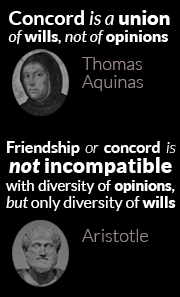‘Respect R rt 2 live…’: Twitter, War 2.0 & PR?
PR and war are old bedfellows. Naturally enough, warriors – always keen on the latest gizmos – are now Twitting. How big a deal is this?
An article on Spiked-online usefully highlights how well Israel has used Twitter, blogging, YouTube, MyFace, Facebook, to mobilize online support. It also cannily wonders whether it all really adds up to very much.
The current Israeli attack on Hamas in Gaza may well be the first War 2.0 in the sense that Israel is using all the tools of the “social” web for its propaganda. Quite recently Georgia’s very highly developed sense of war PR got noted, but Israeli seems to have gone even further. The internet has become, as Spiked suggests, part of the battleground. We had better get used to it.
It is moot whether Israel is hoping to win new hearts and minds by this media barrage. A little like Barack Obama’s use of the same tools, it seems to be more about servicing and motivating its existing fan base.
It’s interesting how all this activity looks much more like a sophisticated version of broadcasting or narrowcasting than anything especially interactive. Israel is talking to audiences rather than engaging with them as four-minute men did during World War One, face-to-face with audiences throughout the US.
Personally, I am a little uneasy about the brevity of the messages (140 characters max). It’s inevitable and it’s part of the point. But it comes close to trivializing the very challenging facts and ideas which underlie the issue.
More generally, I am also a little challenged by the way the state is imitating teenagers. It is one thing for youngsters to chatter at each other but something else again when Heads of State – or armies – use the same techniques. A little like the grainy and phoney videos on David Cameron’s website, these approaches can seem curiously contrived.
Some Twitterings
The FT has commented:
San Francisco-based Twitter says it has grown 600 per cent in the past year in terms of numbers of users and expects to grow to 10 times its current size in the next 12 months. It currently has 4m-5m users, or Twitterers, according to estimates.”
Twitter is ideal for the handheld mobile internet. In countries such as Nigeria, India and Kenya the mobile inernet is the first internet and phone experience most users ever get. People have bypassed POTS and Web 1.0 and gone straight to Web 2.0. Twitter lets them have fun, network and share.
Curiously, Twitter is not entirely liberationist. It encourages a herd mentality: I follow so and so because it is good for water-cooler talk, or for my cool image. The larger the following a Twitter has, the less of a real community it represents.
Twitter commentator LeMeur highlights on his blog the 7000 posts from LeWEb posted over two days, and says:
We need filtering and search by authority. We’re not equal on Twitter, as we’re not equal on blogs and on the web. I am not saying someone who has more followers than yourself matters more, but what he says has a tendency to spread much faster.
I would add that depending on what’s being communicated, or who you seek to reach, quantity should never be confused with quality or influence. Targeting content (messages) at audiences is the key to the successful use of any communication channel, including Twitter. (If you want more on this, it is well covered from all sides of the debate by SWOM).
Hence, Twitter is developing specialized clones such as StockTwits.
But the point about Twitter, the lovely, attractive one, is that it encourages a certain anarchy. It requires, therefore, a certain restraint to be understood or used well by corporates, institutions, opinion makers for PR purposes (but used it can and should be as the likes of PepsiCo and Ford do).
